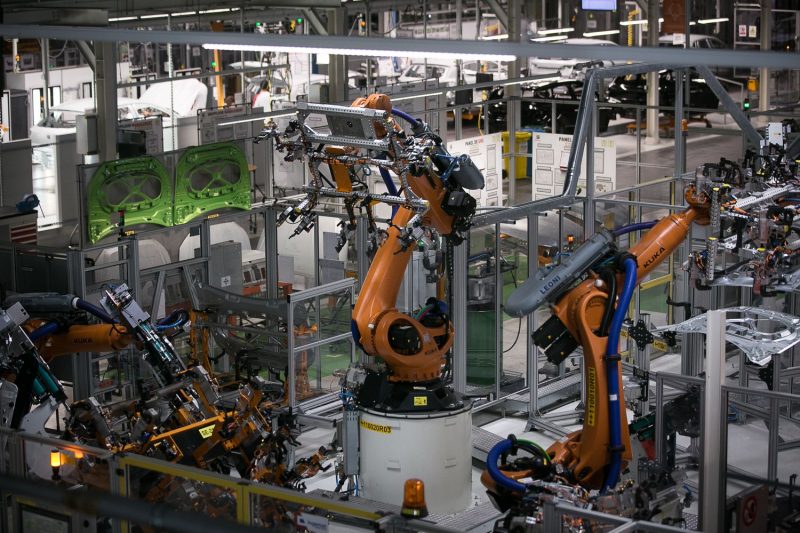The arrival of the coronavirus pandemic has turned the world’s economies upside down, strangling their business fabric and with it, leaving millions of workers in serious trouble, is a fact of similar magnitude, which has caused, in the same way , that the formulas to adapt to this new situation undergo a forced acceleration in time. Robotization, a paradigm of technological development and a result of industrial progress, will from now on be much more present in companies, resulting in an equalization in the workforce between men and machines. This is what the latest study by the World Economic Forum points out (WEF in its acronym in English), where it warns that as a consequence of the abrupt irruption of covid-19 and the consequent general recession of the countries, by 2025 ―in just five years―, the distribution of tasks will be of the 50% between humans and robots, which could result in increased inequality.
In the report titled The Future of Jobs 2020(The future of jobs 2020), the WEF takes as a reference to draw its conclusions the surveys carried out with senior business leaders –mainly HR directors and strategy directors–, who represent almost 300 global companies and together employ eight million workers. According to their estimates, by 2025 the automation rate of the workforce will be 47%, compared to the current 33%, while the jobs performed by human beings will represent 53%, well below the current 67%. “Automation and a new division of labor between humans and machines will displace 85 million jobs worldwide in medium and large companies in 15 industries and 26 economies,” says the analysis, which instead,of the Fourth Industrial Revolution , such as artificial intelligence, and in the fields of content creation ”.
“The integration of robots in companies is linked to the arrival of the Fourth Industrial Revolution or also called Industry 4.0. Its objective is to combine the current automatic processes and the intelligent technologies that exist today to create new automated lines that allow access to all the necessary data in real time ”, says Ander San Vicente, an industrial engineer.
This change in the distribution of work worries the unions, which focus their fears on that group of workers who could remain on the sidelines in this new step forward. “What the future of technology implementation leads us to is a drastic reduction in employment as we know it. Much is said about training so that these new job niches can be filled. But no matter how much we want to run, there is already a part of the population that will not have the possibility of accessing them “, warns Gonzalo Pino, secretary of Union Policy of the UGT.” The need to adapt the capacities of workers to the incorporation of new technologies in production processes is something that has been happening historically.
“With the integration of new technologies such as robotics, nanotechnology or artificial intelligence, it is not intended to leave the worker unemployed, but rather to allow him to carry out tasks with greater added value and for the machines to do that work more monotonous, ”adds San Vicente.
The predominance of technology in the continuous improvement of efficiency and productivity also entails, in the opinion of the workers’ representatives, the need to change the regulatory framework of the conception of work. “The technological disruption that is taking place in the productive sphere has to be governed. We aspire to govern from collective bargaining and social dialogue with one objective, we believe that the benefits that it entails are distributed equitably. That the whole of society is benefited by this technological transformation ”, assures Gutiérrez. “We must go in the direction that all the processes that are being introduced from technology have to revert to society. Does the robot pay or not pay taxes? It must pay them to the extent that the mass of workers is reduced, “says Pino.
“Covid-19 has accelerated the arrival of the future of work,” says Saadia Zahidi, managing director of the World Economic Forum. “The acceleration of automation and the consequences of the recession caused by the pandemic have accentuated the existing inequalities in the labor markets and have reversed the advances in employment that have materialized since the global financial crisis of 2007-2008. It is a double scenario of difficulties that presents another obstacle for workers at such a difficult time ”, he adds.
Irruption of teleworking
As recognized by 43% of the companies surveyed in the report, they will reduce their workforce due to technology integration, while 41% plan to expand the use of contractors for specialized jobs and 34% plan to expand their workforce due to technological integration. As has been happening in recent years, the robotization entry tunnel is mainly focused on information and data processing, administrative tasks and routine manual work for administrative and productive jobs. The World Economic Forum report warns that half of those workers who keep their jobs in the next five years must “take courses to strengthen their basic skills.”
To support the forecast of the worsening of inequality, the WEF relies on a study carried out by the ADP Research Institute in which, after analyzing the consequences of the impact of the coronavirus on the United States market, it resolved that “the repercussions of the 2008 global financial crisis in people with lower educational levels, compared to covid-19, the current ones are much more important and are more likely to exacerbate existing inequalities.
Another of the work formulas that the present ballot has resolved, and it seems that it will also do so, at least in the immediate future, is teleworking. According to the report, 84% of employers are prepared to digitize work processes, and affirm that “there is the possibility that 44% of their staff will telecommute.” However, 78% of employers believe that this new work format will have a negative impact on the productivity of their workers, so they are trying to design a viable system that maintains the effectiveness of tasks performed remotely.









